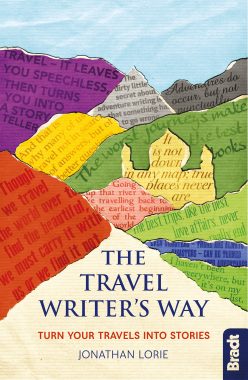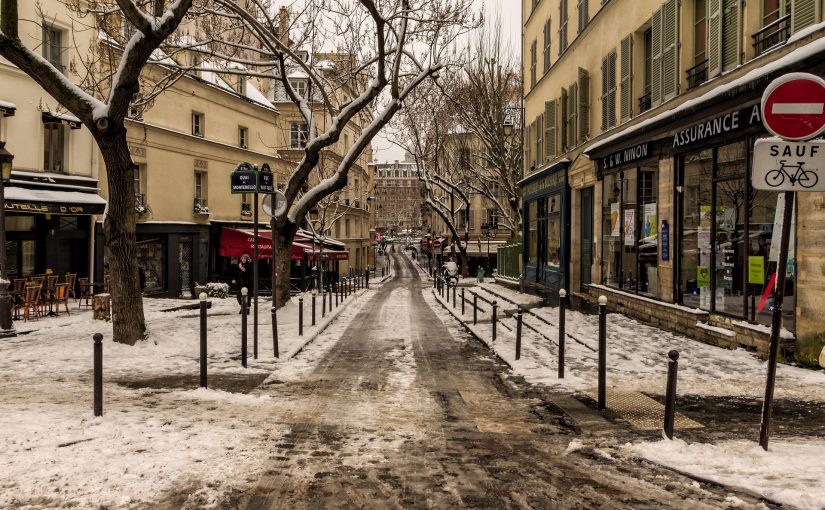CHAPTER 1: TAKE ME WITH YOU
There’s a narrow street in Paris where I like to walk. It has tall white houses with wooden shutters and pigeons flutter on the mansard roofs.
Halfway down is a townhouse where a famous sculptor called one afternoon in 1883 to teach a young woman whose usual teacher was away. She had fierce eyes and a fine talent for sculpting bodies and within months she was sharing his studio and his dreams. Their passionate affair inspired the world’s most famous sculpture, The Kiss. But she died in a lunatic asylum after he abandoned her.
‘She had fierce eyes and a fine talent for sculpting bodies and within months she was sharing his studio and his dreams.’
Further along is a boulevard filled with cafés, including a pretty art deco place full of gilded mirrors, where the wooden tables carry brass plaques for the famous bohemians who once drank here. You can sit opposite Baudelaire and lean across to Edvard Munch, avoiding Jean-Paul Sartre. Imagine the conversation you’d have with them. On the counter, by a silver bucket filled with champagne, is a plaque for the café’s most famous client, Ernest Hemingway. He used to write and drink here in the early 1920s when he was learning to be a writer.
In those days he lived in a cheap flat above a sawmill, back in the little street. You entered it through a yard full of timber that smelled of forests and summer. Today the sawmill has gone, replaced by the concrete blocks of a school where children’s voices burble through the windows at break time. And Hemingway moved on too, to win the Nobel Prize for Literature.
At the other end of the street is a turning to an alley where I often pause. Behind an old green door is an art school where many famous painters trained. And you can learn here too, at one of their drop- in classes where amateurs like you and me gather around a nude model to draw or paint. The studio is large and cold, lit by huge windows and heated by a single ancient iron stove. But it’s warm enough on a spring morning and I like to walk in the footsteps of Gauguin or Modigliani or my mother, who trained here in the 1950s when she was a young and very striking Swedish student who had run away from home. When the door creaks open, a woman wanders out, sketchbook in her hand.
I’m writing this – and remembering it – in a terraced house in London on a snowy day at dawn. It’s a time of day when many writers get their writing done. Hemingway said you warm up with your work. Outside the world is white and cold, cars and dustbins muffled with snow. Inside the house is quiet with the sleep of children. The only sounds are the padding of a cat and the tapping of my keyboard. This is how it begins.
‘Hemingway said you warm up with your work.’
How do you describe a place? How do you weave in its stories,your stories, the things you’ve seen and felt and want to share? What do you keep in or leave out? And what about the people you’ve met? Above all, how do you take the great rush of your experiences and shape them into stories that people want to read?
This is a book about how writers do this and how you can do it too. In this first chapter, we’ll introduce the subject as a whole and focus on the basic skills for writing about a place.
Let’s begin by considering the story at the start of this chapter – my walk in Paris. I’m not claiming that what I’ve written is War and Peace, or even In Patagonia (more on that one later). But it does illustrate some key questions in writing about places. So forgive me if I talk about what I wrote for a while. It’s not my ego: it’s just useful to show you what goes on backstage.
The first paragraph (‘There’s a narrow street in Paris…’) is very simple and aims only to be descriptive. It’s trying to take you down that street by offering straightforward observations in language so plain that you don’t notice the writing, you only notice the street. So the colour is called only ‘white’, not fancier names such as ‘ivory’ that might distract from the sense of being there. The content is simple too – shape of the street, colour of the houses, some birds on the roofs. The sentences are very easy, with no punctuation to clutter your walk down that street.
I mention this because it can be tempting to write in a complex fashion, to reach for fancy phrases and clever effects. These have their place but that level of cleverness can get in the way of the story you’re trying to tell. Does my first paragraph work alright as it is? If so, it’s an example of how straightforward your writing can be. And if you’re a beginner, writing simple can teach you more than writing clever.
‘If you’re a beginner, writing simple can teach you more than writing clever.’
Meanwhile, notice the precision of the detail. The shutters are ‘wooden’ not wrought-iron, the birds ‘flutter’ as pigeons do. Every time you make your observations sharp, your overall scene gets sharper. Calling them ‘pigeons’ makes them a certain sort of bird. Imagine if I’d called them ‘vultures’.
So paragraph one is a scene-setter. We know where we are. I’m taking you there. That’s an easy way to start a story.
Moving on, things get more complicated. We walk down the street and pass a house where something happened. This is one of the gifts of writing travel: you can go to places where other stories happened, and bring them into your own. Finding those places is one of our tricks, and using them brings an extra dimension to your description of a place. This is no longer just a back-alley in Paris: it’s a place of romance and regret.
But note how compressed that story is. The encounter between those sculptors lasted three decades, and I’ve got it down to four sentences. People have made entire books and films about the affair between Auguste Rodin and Camille Claudel, but I didn’t even give you their names. Yet it still works as an element in my wider story. And that’s because I didn’t let it swamp the rest.
I kept it short by being highly selective. So much has been left out. That single paragraph started out as four but I scrapped the other three. They were just too much for the remainder of the piece. So having a sense of the wider story you’re trying to tell is important. This is my story about my walk down a street: it’s not Camille’s story about her whole life. I’ve kept my story focused by resisting temptation.
Look how much has been left out of my story as a whole. The name of the street itself. The café. The art school. I chose to do that. My plan was to make you focus on the material not the labels. Names can be useful as points of reference, like the plaques on the café tables. That part wouldn’t work without. Mentioning ‘Paris’ is fairly essential to give the story a frame. But names can also be a smokescreen – an excuse for not describing something, just slapping on a label instead. It’s worth trying to write about somewhere famous without using the name at all: the effect is more powerful, as the reader sees it afresh.
‘Names can be a smokescreen.’
Then my story moves on down the street. This is another gift for travel writing. If you’re making a journey, the places you pass can provide the structure for your material. Each stop on my walk provides an excuse for a story, because that’s the place where it happened. Rodin, Hemingway, my mother… Those stories apparently have nothing to do with each other, but they’re sufficiently entertaining – I hope – for you to excuse this and read on.
But the structure is not accidental. If you look carefully, you’ll see that my story of a single street actually takes in two neighbouring streets as well. I’ve cunningly detoured to them by saying ‘further along’ and ‘at the other end of the street’. Those are ‘hinges’ that allow me to slip around. And I’ve selected those other places because they let me bring in other stories. This apparently random journey is actually a carefully chosen excuse for what I want to talk about. Most professional travel writing operates this way: the journey has been planned to yield the material the writer wants.
In fact, the selection of this particular street was made so that I could tell the inner stories that it links. They’re all stories of people learning to be writers or artists. As you are. Some end reassuringly in great success. Rodin carves The Kiss. Hemingway wins the Nobel Prize. Lesser characters like Gauguin and Modigliani become famous. Other stories offer a warning. Camille dies insane. My mother – well, what do you know? Her story is left untold. In imaginative terms, she’s left where we last saw her, a learner on the path. As we all are.
And that’s the theme of my little Paris story. It’s about learning an art, the possibilities and pitfalls. I’ve chosen particular stories to build that theme in that place. It’s a structural format. It can be applied across so many of your travel stories, to create a form and meaning from the random reality of a travel experience. Turning your travels into tales is the theme of this book. The challenge is to shape a real journey into a satisfying story shape.
That’s why my Paris passage jumps to London, to the moment when I’m wondering how to create that shape. We all do. The blank page is always terrifying. But as in the story, you warm up with the work, you start to get the words down. That’s what it takes. The difference between remembering and writing is the difference between what actually happened (I walked down a street in Paris) and the story I shape on the page (I walked down a street and met the ghosts of Rodin, Munch and friends). By being selective, of what you leave out or add in, you can build an interesting travel story from even a tiny travel event.
When the old green door of memory creaks open, someone interesting walks out. Is it your mother? A woman you will fall in love with? A famous artist or a failure? That depends on what you see and what you bring.
‘When the old green door of memory creaks open, someone interesting walks out.’
In this way, travel writing is a form of memoir – what I remember and care to tell you. Making the leap from writing down everything that happened on your trip, to writing a little of what happened in an interesting way, is a huge step towards becoming a readable travel writer. I hope this book will take you there.
As to whether it will lead you to the Nobel Prize or the madhouse, that’s up to you. Let me know when you find out.
KEY POINTS IN THIS CHAPTER
1 Start by writing simply.
2 Make your details sharp, significant and selective.
3 Use all your senses.
4 Find places where there are stories.
5 Leave a lot out.
6 Build a shape.
7 Get the words down.
Read the rest of this chapter in The Travel Writer’s Way, yours for 10% less here. Or join our live courses.
Extract from The Travel Writer’s Way, copyright Jonathan Lorie 2019.

